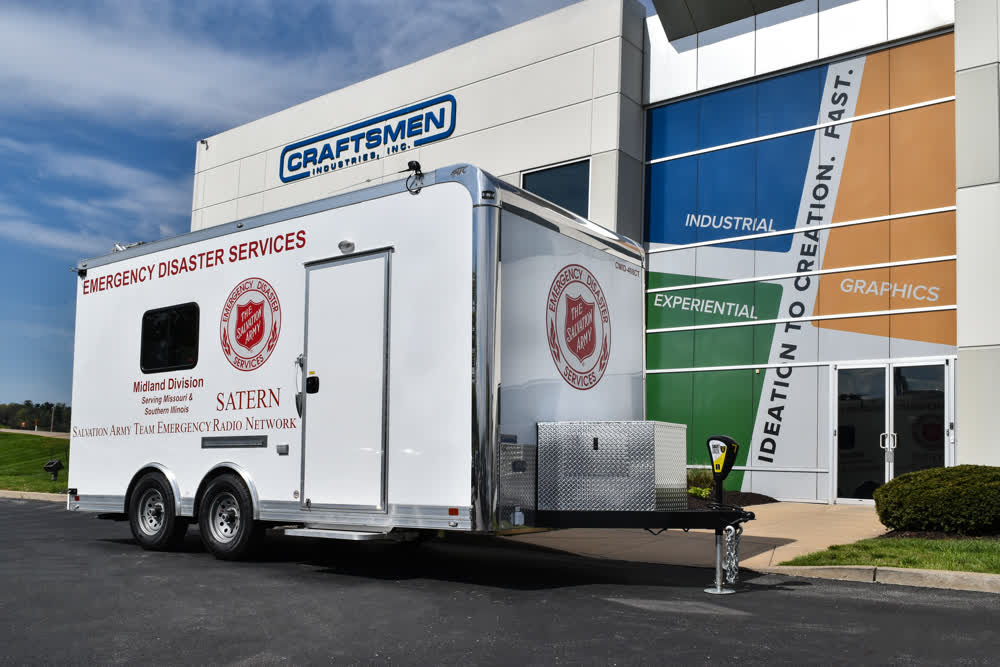Convert Utility Trailer to Enclosed One: A Detailed Guide
There can be many reasons for needing to repurpose your trailers. Knowing how to turn a utility trailer into an enclosed trailer will save you...
6 min read
Craftsmen Industries Aug 5, 2025 5:45:42 AM
/Landshark%20Sand%20rail%20-%20building%20wrap.png)
When it comes to protecting a building from the elements, few steps are as necessary, or as overlooked, as properly installing the building wrap. It's not just about slapping on a layer before the siding goes up.
A well-installed wrap helps keep moisture out, controls airflow, and lays the groundwork for long-term energy efficiency. Done right, it adds serious value. Done wrong, it can quietly lead to rot, mold, and expensive repairs.
This guide walks you through the best practices for building wrap installations with simple, proven steps that make a real difference. If you want your wrap to perform like it should and avoid headaches down the line, keep reading!
Building wraps, often called house wraps, act as a protective shield for your walls. Their main job is to keep water and air from sneaking into the structure while allowing moisture inside the wall to escape. This balance is important because trapping moisture can cause serious damage over time.
A good building wrap blocks wind-driven rain and reduces drafts, helping prevent water from penetrating the wall assembly. At the same time, it’s designed to be vapor-permeable, meaning it lets water vapor pass through without allowing liquid water in. This helps keep the walls dry and prevents mold or rot.
Beyond providing moisture protection, building wraps also contribute to your home's overall energy performance. By reducing drafts, they help maintain consistent indoor temperatures, easing the load on your heating and cooling systems.
This means less energy wasted and lower utility bills. It also helps keep your living space more comfortable throughout the year.
Proper use of a building wrap also protects the structure itself. When moisture is kept out, wood framing and sheathing stay dry, which, in turn, reduces the risk of decay and extending the life of your building.
Properly installing building wrap is more than just wrapping the house and moving on. Every step matters if you want your wrap to provide lasting protection.
Let’s walk through the essential practices that ensure your building wrap performs effectively.
Before you even unroll the building wrap, make sure the wall surface is ready. This is often overlooked, but it plays a significant role in how well the wrap performs.
A clean and prepared surface allows the wrap to lay tight and avoid sagging, which can trap moisture and cause problems later on.
The way you start your installation sets the stage for the entire job. Always begin at the bottom of the wall, right at the sill plate.
Starting at the sill plate with these steps ensures water flows away naturally and the wrap maintains its integrity.
How you attach the wrap is just as important as how you place it. Incorrect fasteners or improper placement can create pathways for water and air leaks.
Proper fastening prevents wind from loosening the wrap and stops water from infiltrating through the tiny holes fasteners create.
Taping is the final step to creating a continuous barrier that keeps air and moisture out.
Taping transforms a series of overlapping sheets into a solid, continuous shield.
Before you cover the wrap with siding or cladding, take time to inspect your work carefully. This step can save you headaches later.
Take your time for a thorough inspection to ensure your building wrap performs as intended and protects your home for years to come.
With a step-by-step installation process, you give your building wrap the best chance to keep moisture out and help the structure last longer. Proper prep, careful layout, secure fastening, thorough taping, and a final inspection make all the difference on the job site.
Installing building wrap correctly is just the start. To make sure it lasts and does its job well, keep these extra tips in mind:
Start at the bottom of the wall and work upward, overlapping each layer like shingles. Make sure the wrap is tight but not stretched, and tape all seams and penetrations for a continuous barrier.
The wrap should extend at least 12 inches around each corner. This overlap helps create a continuous barrier and prevents water infiltration.
Begin by securing the wrap at the sill plate, then unroll it upward, overlapping each section properly. Use cap nails or staples to fasten, and tape all seams, windows, and door openings.
Use plastic cap nails or cap staples spaced about 12 to 18 inches horizontally and 24 inches vertically. Fasteners should be flush without overdriving to avoid tearing the wrap.
Proper building wrap installation may seem straightforward, but the details make all the difference. Following the proper steps protects your building from moisture, improves energy efficiency, and prevents costly repairs down the road. Taking the time to do it right pays off in durability and peace of mind.
If you’re looking for high-quality building materials and expert advice, Craftsmen Industries has you covered. From premium house wraps to Indoor and Outdoor Graphics, our products are designed to work together for lasting results. Visit craftsmenind.com to see their selection and find the right materials for your next project. Quality starts with the right products and the right knowledge.

There can be many reasons for needing to repurpose your trailers. Knowing how to turn a utility trailer into an enclosed trailer will save you...

Do you still remember some of the jingles or slogans from the commercials you saw on television - things like, “Mikey likes it” and “I’m lovin’ it?”...
.jpg)
Using fleet wraps on vehicles is an excellent way to advertise your brand. While you are browsing through your options, you might wonder what...